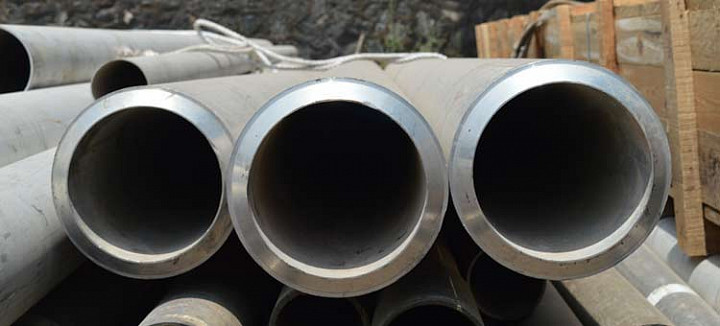If talking about steel then it is an alloy and comprises mainly of carbon iron. Even though, carbon is the most cost-efficient alloying material, many other alloying elements are also used, including manganese, vanadium, chromium and tungsten. These alloying elements harden the iron, and the varying amounts of these alloying elements determine properties such as the ductility, hardness, and tensile strength of the steel. Today, steel of is the most common material in the world. It is a major component of infrastructure and buildings. It can be steel pipes and A106 gr b pipes, that use in ships, cars, automobiles and home appliances.

A tube from stainless steel tube manufacturers in india is generally a cylinder or hollow tube used to move or move materials, but is also used as a component in structures. The terms tubes are generally defined as their inner diameter, while tubes are generally defined as their outer diameter. Steel tubes and steel pipes of carbon steel pipe suppliers in India has many uses. It used for water supply systems to pump water in homes and offices as part of the building water supply system. Huge and extensive steel pipelines are also used to transport gas and water to cities and structures far from the source. Some hoses are also used to transport liquids and other chemicals. Entering and leaving the factory inside and outside Pipes are also used to transport wastewater, sludge and even beer. The most important areas of use for steel pipes from alloy steel pipe manufacturers in India are the transport of domestic water, oil and natural gas.
In addition to transporting materials, pipes and sheets of are also used as scaffolding to support people and materials in the construction and repair of office buildings, homes and other structures. Steel pipes and bars of SS round bar manufacturers in india are also used as components in mechanical systems, such as rollers in conveyor belts, compactors, linings in concrete pile structures, pressure manufacturing processes, high temperature manufacturing processes, oil, well casing, oil refining equipment etc. Tubes and bars are available in different diameters, sizes, breaking loads, lengths, etc. Depending on the use, pipes and tubes can also be specially manufactured by SS pipe fittings manufacturers in india. For household and industrial use, pipes and tubes are sold through distributors and retailers.
General industrial and residential pipes and tubes are available directly from distributors and pipe dealers, who offer a wide range of pipe sizes and diameters. Steel pipes have been produced for more than 150 years, and the pipe sizes used today in galvanized pipes and PVC pipes were developed into steel pipes many years ago. The numbering system – SS 40, 80, 160 was established a long time ago, and although SS 40 is thicker than SS 1120, it looks a bit strange because the outer diameter is the same. These pipe and flanges sizes of stainless steel Flanges Manufacturers In India are based on previous sizes, but there are other pipes that use both internal and external dimensions based on existing copper sizing standards.
No comments:
Post a Comment